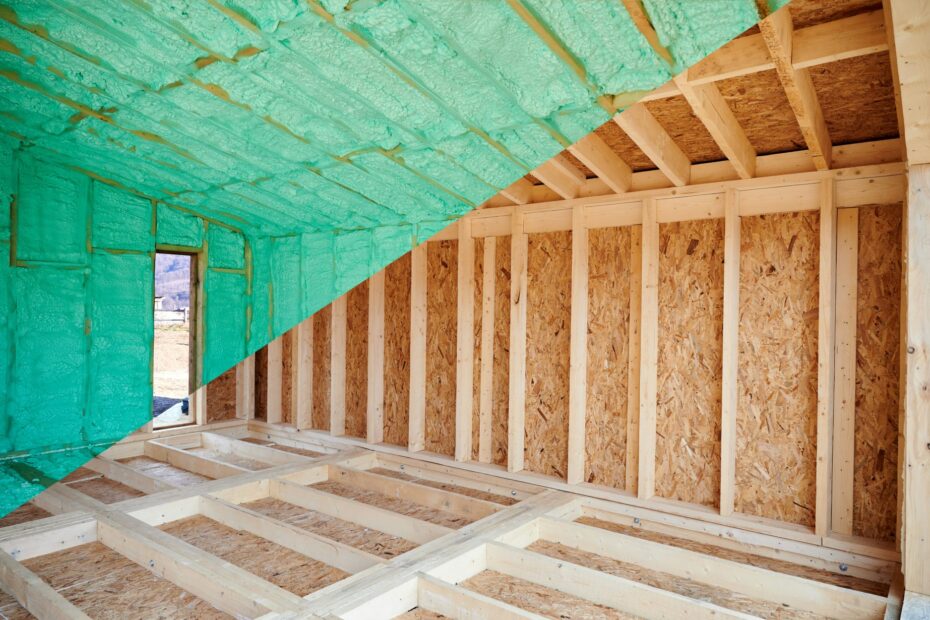Most people finish a roofing project thinking it’s done once the outer layer is sealed and the tiles are in place. That’s it, job done. But there’s one element that often gets ignored, and it’s the one that could have the biggest long-term impact on your home’s comfort and energy efficiency.
Roof insulation.
This isn’t a nice-to-have. It’s not something you add later on if there’s budget left. Insulation is one of the most crucial components in the roofing structure. Without it, you might as well be leaving a window open all year round.
What Roof Insulation Actually Does
Let’s break it down. Roof insulation sits between your ceiling and the roof covering, acting as a barrier that slows down heat transfer. In summer, it helps keep the sun’s heat out. In winter, it keeps your heating from escaping. Simple, but powerful.
You probably already know it reduces energy use. But the real value is in what that means:
- Lower power bills – Less need for heating and cooling means savings, especially over time.
- More consistent indoor temperatures – Rooms are less likely to swing between boiling hot and freezing cold.
- Less strain on your air conditioning system – When insulation does its job properly, systems don’t need to work as hard, which can extend their lifespan.
Why the Roof Matters More Than You Think
It’s easy to focus on wall insulation or double-glazed windows. They’re visible, tangible, and promoted heavily. But the roof is often the biggest culprit when it comes to heat loss or gain. Think about it: warm air rises, which means heat naturally moves up toward your ceiling. Without insulation, it escapes almost immediately.
The opposite happens in warmer months. The roof surface absorbs heat from the sun all day, especially if it’s made of metal or dark tiles. That heat then radiates downward, turning your ceiling into a heat source of its own. Insulation puts a stop to both.
Not All Insulation Is Equal
Insulation comes in different types and materials, and not all of them are suited to every roof. Some are designed for pitched roofs, others for flat designs. Some are installed under the roof surface, others laid across ceiling joists. Each approach has different benefits, but the key is to match the product to your home’s structure and climate.
Here’s what a good insulation setup should do:
- Fit snugly – Gaps or thin spots can create thermal bridges where heat sneaks through.
- Resist moisture – Damp insulation loses effectiveness quickly and can lead to mould problems.
- Have the right R-value – This measures how well it resists heat flow. The higher, the better. But more isn’t always necessary, depending on your location and roof type.
Professional guidance makes a big difference here. What works for one home won’t always be ideal for another.
Roof Insulation and Your Home’s Lifespan
Beyond comfort and cost, roof insulation can also protect your home’s structure. When the temperature inside your roof cavity fluctuates constantly, it can lead to condensation. That moisture buildup causes timber to rot, metal to rust, and in the worst cases, the growth of mould that can spread through the house.
Some of the most common structural issues in homes are linked to exactly this kind of unchecked moisture and temperature imbalance. A well-insulated roof helps stabilise temperatures and reduce the chance of this kind of damage. Think of it as preventative maintenance, built right into your house.
And then there’s noise. Roof insulation can reduce the sound of heavy rain, wind, and even nearby traffic. It doesn’t turn your home into a soundproof bunker, but it’s often a noticeable difference.
Signs Your Roof Insulation Is Letting You Down
If your home already has insulation but still feels hard to regulate temperature-wise, it might be time to check what’s going on overhead.
Look for these signs:
- Rising energy bills, even when usage habits haven’t changed
- Hot upstairs rooms, even with cooling running
- Cold patches in ceiling corners during winter
- Mould or mildew around roof or ceiling edges
- Wildlife noise in the roof cavity (damaged insulation can attract pests)
A visual inspection by a professional can confirm whether the insulation has degraded, become damp, or was just poorly installed from the start.
Best Time to Insulate? Before You Regret Not Doing It
Roof insulation is easier and cheaper to install when roofing work is already happening. So if you’re planning repairs, replacements, or even solar installation, it’s the perfect time to do it. Waiting means more cost and hassle down the line, and you’ll continue losing money through heat transfer until it’s fixed.
That said, it can still be retrofitted later. Just keep in mind that some roof structures may be harder to access, which can affect labour time and cost.
What to Expect After Insulation
People often report their home feeling noticeably quieter and more comfortable once insulation is in. You might find that your air conditioner doesn’t need to run as often, or that your heater finally gets the house warm evenly.
It’s not a flashy upgrade. No one comes over and compliments your ceiling insulation. But over time, you’ll feel the difference in the way your home holds warmth, stays cooler, and costs less to run.
And that’s worth more than a sleek finish or a fancy fixture.
The Missing Layer That Changes Everything
When the roof is done, but insulation is missing, the job isn’t truly complete. It’s like locking your front door but leaving the windows wide open. Whether you’re building, renovating, or just trying to make your home more efficient, roof insulation isn’t optional. It’s the one upgrade that pays you back every single day.
It might not be visible, but it’s working 24/7. Quietly saving you money, protecting your home, and keeping every room more comfortable.
Don’t overlook it. Your roof isn’t finished without it.
